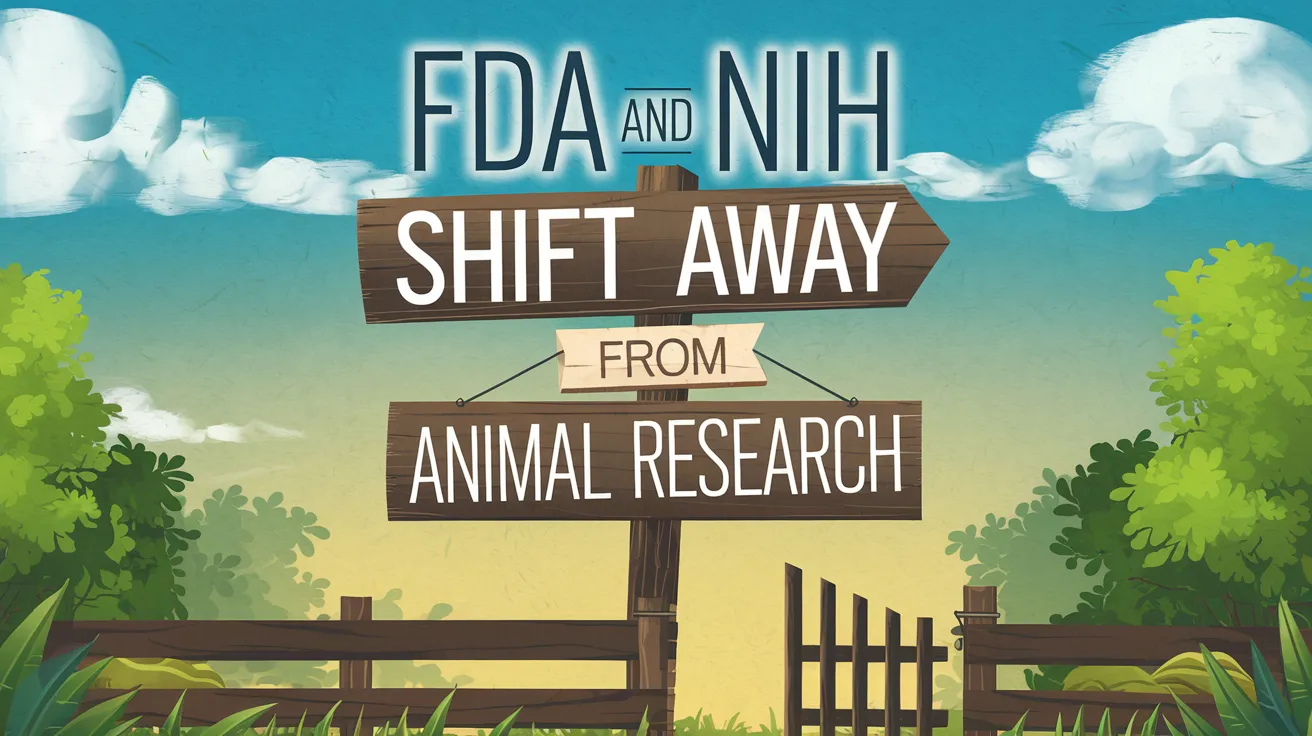FDA and NIH Shift Away From Animal Research

In an ambitious announcement, the FDA, under Commissioner Marty Makary, revealed plans to significantly reduce animal testing requirements for monoclonal antibodies and other therapies. This transition will see a greater emphasis on alternatives such as AI and human organoid lab models. While some scientists express concerns regarding whether these alternative technologies have sufficiently advanced to fully replace animal research, organoid manufacturers and advocates for animal rights have welcomed the increased focus on non-animal testing methods.
Tomasz Kostrzewski, CSO at organ-on-a-chip manufacturer CN Bio, expressed surprise at the FDA’s announcement, describing it as “fantastic.” He underscored the potential to incorporate alternative methods, asserting that while animal studies have their place, they should not be the default method in drug discovery.
The movement gained swift momentum when, nearly three weeks after the FDA’s announcement, the National Institutes of Health (NIH) similarly outlined plans to prioritize grant proposals that utilize alternatives to animal research. The NIH is also establishing the Office of Research Innovation, Validation, and Application (ORIVA) to coordinate efforts across the agency for the development, validation, and implementation of non-animal approaches in its biomedical research.
Both the FDA and the NIH intend to encourage the use of computational, experimental, and other human-relevant methods, particularly AI-driven technologies, organoids, and organ-on-a-chip models, as well as real-world population health data. The FDA aims to make animal research “the exception rather than the norm” within three to five years for preclinical safety and toxicity testing, as highlighted in an executive summary published online.
Joseph Wu, a cardiologist at Stanford Medicine and co-founder of Greenstone Biosciences, is enthusiastic about this shift, arguing that results from animal models rarely translate well to human experience. He noted that over-reliance on mouse models hampers progress across the scientific field.
Aysha Akhtar, co-founder and CEO of the Center for Contemporary Sciences, cautioned drug developers to adapt quickly to these changes or risk falling behind in their industry.
Confronting the Animal-to-Human Disconnect
The FDA’s announcement came after the FDA Modernization Act 2.0, signed into law in December 2022, which allowed consideration of non-animal methods during the drug approval process. This act eliminated the requirement for animal testing for new drugs in specific situations.
Millions of animals are utilized for biomedical research annually, and expert opinions underscore the ethical concerns surrounding such practices. Beyond ethical considerations, experts contend that animal research is costly and often lacks translatability to human models due to the limited genetic diversity among laboratory mice.
Stem cells and organoids—three-dimensional structures mimicking certain properties of human organs—could bridge some of these gaps. These technologies can capture genetic variabilities by using cells from diverse patients, enabling more effective high-throughput drug screening.
Safety: Not There Yet
Despite the advantages of alternative methods, experts agree that organoid technologies are not yet fully capable of replacing animal testing in drug research and development. Studies indicate that organoid models can effectively predict drug efficacy and safety profiles and prioritize candidate drugs, yet final stages of drug testing will likely continue to require animal models in the foreseeable future.
According to some scientists, significant aspects of living systems remain challenging to model accurately with current organoid technologies. Most existing organoids represent only single organs, lacking the holistic view of how entire organ systems respond to treatments. Efforts to create interconnected organ models are ongoing but will require further time and technological advancement.
The Cost of Adopting New Models
The economic outlay for integrating AI and organoid technologies into laboratory environments poses another barrier. The FDA Modernization Act 2.0 does not provide dedicated funding for transitioning away from animal models, nor does the recent announcement.
Training scientists to employ these novel models adds complexity, as current students often remain unfamiliar with non-animal approaches, highlighting the need for a workforce equipped with the knowledge to work with these innovative testing methods.
Compounding these challenges are effects from the cuts to NIH funding experienced during the Trump administration. Experts voice their concern regarding how these reductions could hinder the pace at which non-animal methods are adopted. “We need robust scientific funding. That’s the bottom line,” Wu stated.
Moreover, ingrained practices within biological research complicate the transition. Historically, the reliance on animal testing is deeply embedded; nonetheless, some contract research organizations (CROs) have begun to adopt alternatives. For instance, CN Bio has secured partnerships with CROs like Pharmaron and Altis Biosystems.
“CROs are the real heartbeat of the pharmaceutical industry,” noted Kostrzewski, indicating that their collaboration will be vital to advancing these newer methodologies.
Growing Consensus and Adoption
Even prior to the recent FDA and NIH announcements, the biopharma sector had begun integrating non-animal methods into research and development practices. The FDA and NIH’s commitments are anticipated to significantly accelerate these efforts.
Numerous companies developing monoclonal antibodies and other drugs are already aligning with enterprises that promote alternatives to animal research. For example, Bristol Myers Squibb partnered with Tempus in 2023 to employ AI and organoid technologies for identifying new molecular targets.
Similar collaborations have emerged with organizations like AstraZeneca, Johnson & Johnson, and Roche, who are also investing in organ-on-a-chip initiatives to enhance their research approaches.
Roche has asserted its focus on exploring and implementing methodologies based on New Approach Methodologies (NAMs), including employing organoids alongside in silico technologies for improved drug discovery.
However, a Roche spokesperson emphasized that animal testing remains a crucial element of drug development for the present: “While Roche welcomes the FDA’s position statement and the ambition behind it, we expect that research involving animals will remain an irreplaceable part of the drug development process and biomedical research in the near to mid-term future.”